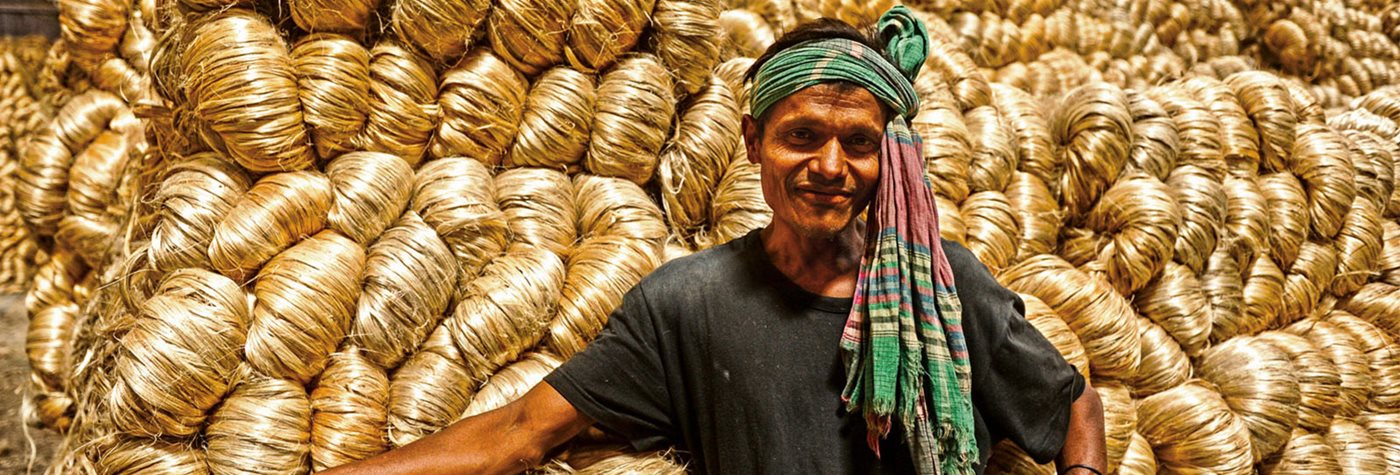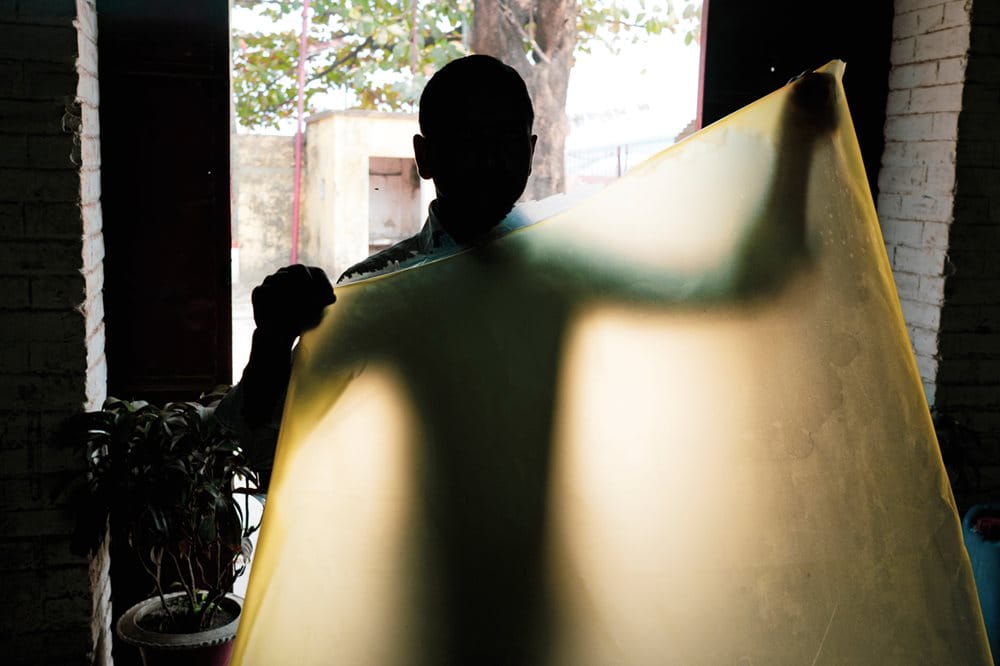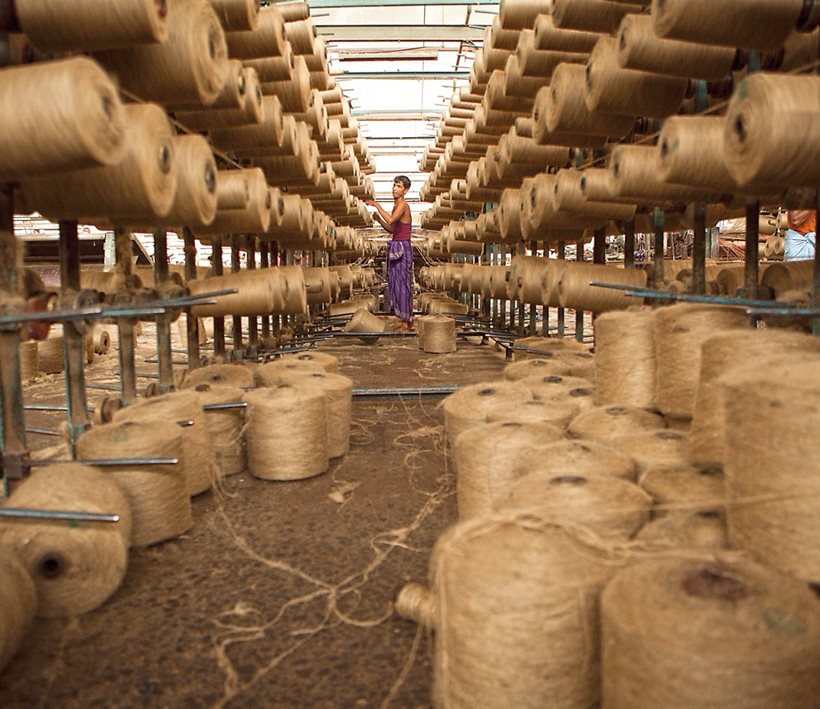More than a fabric
Jute, The Future’s Golden Fiber

Global November 01, 2020 - By
From her high-rise flat in Kamalapur in downtown Dhaka, Nishat Tuly reviews a few of her recent clothing designs.
Outside her window, within walking distance from Bangladesh’s largest train station, a determined monsoon rain comes down in a roar. At 26, the median age in this Southeast Asian nation of 165 million, she is an up-and-coming fashion designer in pursuit of the next trend. That, she says, points her toward environment-friendly materials as the go-to fabrics of the future—and specifically, jute.
“The market of jute and jute-related products is increasing day by day,” Tuly says, explaining that what was once Bangladesh’s most important agricultural crop is making a serious comeback.
Her most-recent creation, inspired by Bangladeshi painter Qayyum Chowdhury, embraces jute as sustainable fashion.
“The environmental issues are gaining in popularity,” she says.
A hectare of jute gobbles around 13.6 tonnes of carbon dioxide and returns to the atmosphere 10 tonnes of oxygen.
Historically, jute has been a staple of both fabric and food for more than 2,000 years. The earliest mention of what appears to be jute is found in a description written by Pliny the Elder in the first century CE. In his book The Natural History, the Roman author and philosopher refers to the plant by its genus name, Corchorus, describing its benefits and how people in Alexandria consumed its jute mallow leaves.

“The leaves of it are rolled up, one upon the other … for the viscera, and in cases of alopecy, being good also for the removal of freckles,” he wrote.
Today, Egyptians mince jute leaves and fry them alongside garlic and lamb in a popular dish called molokhiya, often served with chicken and rice. And Egyptians are not alone at the table: Cypriots simmer jute leaves into a tomato stew, while chefs in Thailand blanche them like spinach in a recipe known as bai po. In Sierra Leone jute is stewed with fufu, a cassava-based porridge, and it is from that West African country that jute is said to have made its voyage to the New World with the human trafficking of the slave trade—especially to the Caribbean island of Haiti, where it features in lalo, a dish of blue crabs, jute leaves and lemon juice.
Jute fiber has no less of a long history as a material for rope and coarse-thread items such as large transport bags and heavy-duty baskets. In this manner the product was sailed across the Pacific to furnish island markets. In India, in 1590, the Mughal Emperor Akbar, who ruled over most of the Indian subcontinent, noted in the Ain-i-Akbari that in the province of Ghoraghat, today in northern Bangladesh, “silk is produced and a kind of sackcloth” was worn. Europeans wove jute into what came to be called hessian, burlap or gunny, which is still widely used for sacks, mats and nets. During World War i, an estimated 1 billion or more hessian sandbags lined the trenches of Belgium and France.

Botanically speaking, Corchorus capsularis or white jute produces the finest fibers, but Corchorus olitorius or tossa jute grows in greater abundance. Both species are the leading sources of both edible jute and jute fiber, and both grow as woody, emerald spears topped by a frilly crown of 10-centimeter-long leaves. Jute has colonized soils in hot, humid, mostly wetland climates the world over, from Brazil to Vietnam, from El Salvador to every equatorial African state. Yet no environment is better for growing jute than the sultry Ganges Delta of the eastern Indian subcontinent, the largest wetland of its kind in the world.
Encompassing two-thirds of Bangladesh and a section of India, this green triangle ranks among the most fertile—and fragile—places on Earth, fed by two mighty rivers, the Ganges and Brahmaputra. After carrying nutrients for thousands of kilometers, these waterways spill into labyrinthine channels, pools, streams and swamps—each one a watery haven for cultivating jute. Some 150 million people live in this delta the size of Iceland, or the state of Kentucky in the us.
In Bangladesh, jute, or paat in Bangla, supports the livelihoods of 25 million people. Each spring, billions of seeds of Corchorus capsularis and Corchorus olitorius are flung across open ground, mostly by women. The seeds germinate with the first showers, and they grow fast—about 2 centimeters a day. By late spring, the delta pools look like lakes of lime-green saplings, and when the summer’s monsoon rains arrive, the jute stalks shoot up until the heat of August, seldom less than 30 degrees Celsius, given them a final nutrient boost. With no artificial fertilizers or pesticides used, the flowering jute plants will tower some 3 meters.



